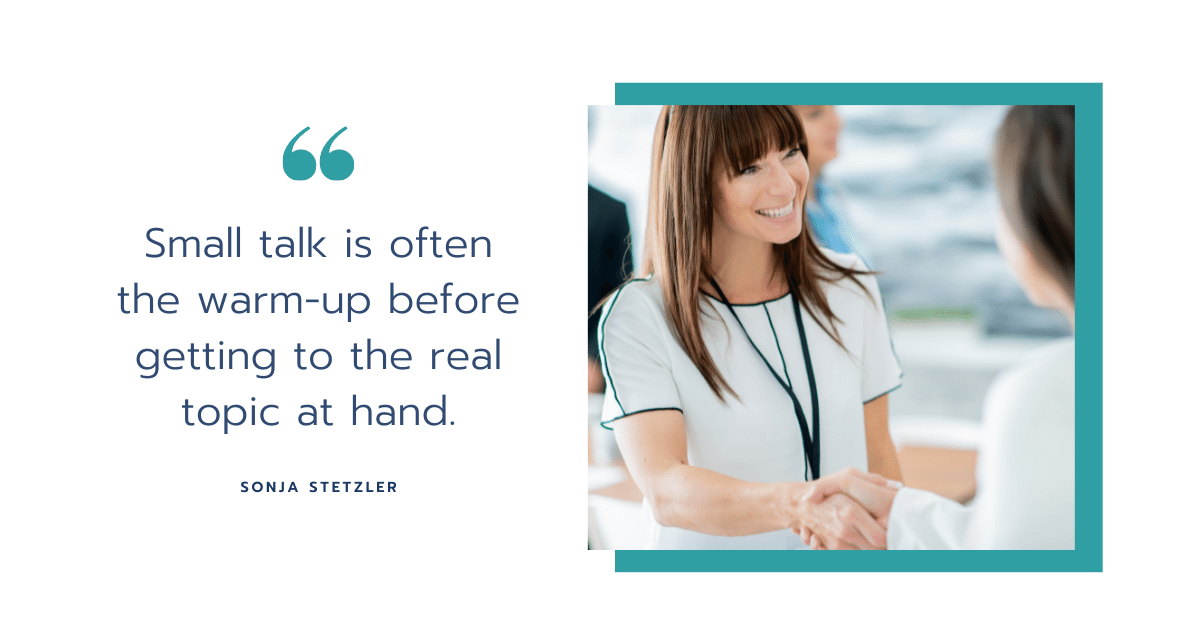As my clients are going back into the office, many are feeling awkward with small talk and in-person meetings and presentations.
Small talk is important in our culture. Small talk enables us to quickly build rapport, connect with others, make a positive impression, and build trust. This results in developing and maintaining relationships that are essential in business communications. And for speakers who are moving from virtual speaking back to in-person speaking, rediscovering small talk with meeting planners and audience members can be helpful for networking and landing new opportunities.
Small talk is often the warm-up before getting to the real topic at hand. Are there ways to develop this skill so that it doesn’t feel so challenging?
Brush up on your skills with this tool.
Carol Fleming, author of “The Serious Business of Small Talk“, has developed an easy framework that I use when working with clients who get tongue-tied in settings where they need a ‘small-talk tool’.
The acronym for the framework is ARE.
“A” stands for Anchor.
Find an anchor, a common ground with the person you want to communicate with. Topics could range from the reason you are in the meeting, a recent event in the news, or even the weather.
“R” stands for Reveal.
Disclose a bit of personal information such as how you think or feel about the Anchor that you just mentioned.
“E” stands for Encourage.
Ask a question of your conversation partner to invite them into the conversation with you.
A conversation for returning to the office might go like this:
“It’s hard to believe we haven’t been in the office for two whole years! (Anchor)
I miss our in-person meetings. (Reveal)
What about you?” (Encourage)
Another tip for becoming more comfortable in settings where small talk is necessary is to act like a host. When we take care of others, we feel less self-conscious. And honestly, when we make others feel more comfortable and effectively connect with them through small talk, it enables you to be seen as a more confident and empathetic leader.
My hope is that these tips will enable you to feel more comfortable and self-assured as we slowly return to more in-person communication.

